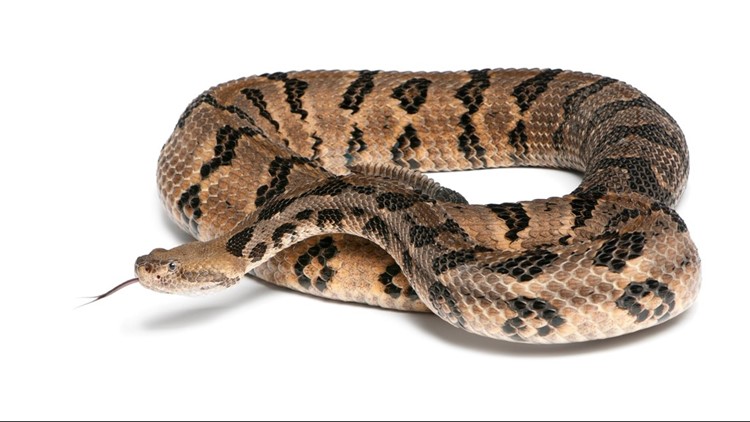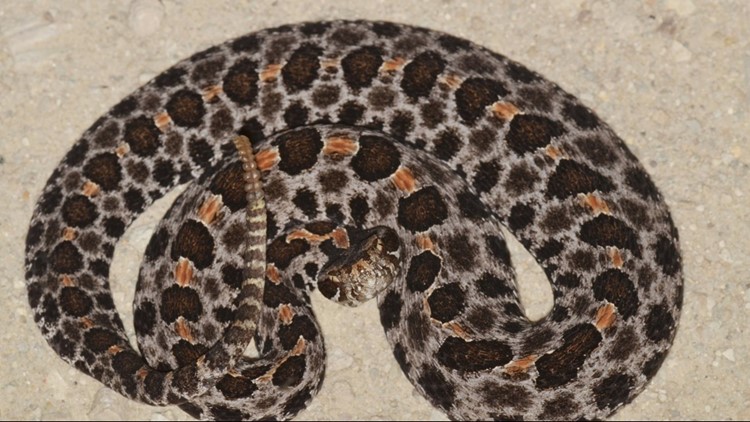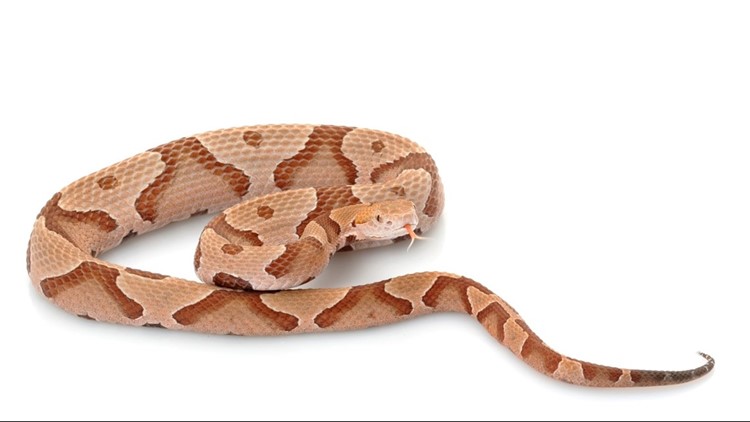When it's time to head outside and enjoy the sunny, warm summer skies of East Tennessee -- it's good to know what kind of wildlife is out there in the many popular outdoor attractions.
Especially venomous snakes. Thankfully, East Tennessee doesn't have too many to worry about, but the ones we do have are fairly common and can strike in places where few would ever expect.
The state of Tennessee at large has a total of 32 native snake species, four of which are venomous according to the Tennessee Wildlife Resources Agency.
Locally, East Tennessee has 23 of those snake species that are frequently found in the area, two of which are venomous (If you ask some, though, they'll swear up and down there's a third -- we'll get to that in a minute).
Thankfully, it's not too hard to identify most of the venomous snakes from their less-threatening non-venomous cousins. The venomous snakes here have distinct features such as heat sensing pits behind their nostrils and eyes with vertical pupils.


While all our pit vipers have distinct triangular heads, going by that alone might not be as reliable, as many non-venomous snakes are able to flatten their heads and bodies into similar shapes when threatened to mimic their venomous counterparts and scare off predators.
Across the state, the four venomous snakes are the timber rattlesnake, the copperhead, the cottonmouth, and the pygmy rattlesnake.
Venomous Snakes of Tennessee
East Tennessee has two of those species native to the area: The copperhead and the timber rattlesnake.
Quite a few would also say they've spotted the cottonmouth (also known as the water moccasin) swimming in the rivers and lakes of East Tennessee, however, cottonmouths are only found on the western end of the state.
The reason for the confusion is because the cottonmouth is frequently misidentified for one of the many non-venomous water-dwelling snakes in the area -- particularly the Northern Watersnake which is abundant and widespread in the area.
It doesn't help that the Northern Watersnake has identifying features very similar to venomous snakes, particularly when it flattens its head and body to look more threatening. The key to telling them apart is the lack of the heat sensing pits and its eyes, as watersnakes will have round pupils. See for yourself:

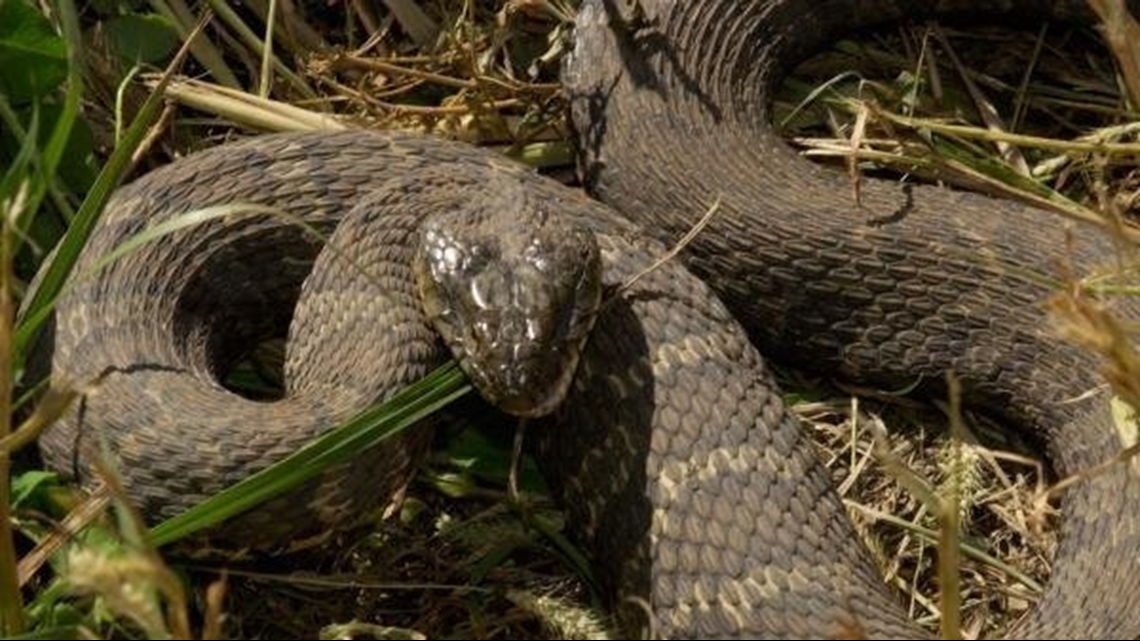
If you find yourself face-to-face with a snake you believe is venomous, all you need to do is walk away and put distance from yourself and it. Do not attempt to catch, handle or kill them -- as antagonizing snakes will prompt them to strike out of defense. Even if you think the snake is dead, never try to handle or pick it up.
To avoid being bitten accidentally, you should stay alert when hiking and stay on paths or clearings to avoid tall, grassy areas. If you're out working in the woods, make it a habit to check for snakes before picking up rocks or wood, particularly around fallen logs where timber rattlesnakes like to dwell.
If you are bitten by a snake in Tennessee, you need not worry about trying to identify the snake according to the Tennessee Herpetological Society -- as the anti-venom needed is all the same for snakes across the state. Simply stay calm, call 911 if possible and head to the closest hospital.
The Copperhead
The copperhead is likely the one venomous snake many people have encountered at some point in their lives, and they thrive in East Tennessee.
They prefer forested areas and place where they can find lots of cover, and people that live on the edge of wetlands and streams may find them to be a frightening nuisance that slithers in their yards.
The snake varies in color, but is usually light brown or gray with dark brown "hourglass" crossbands.
Despite being commonly reported in neighborhoods, the snakes are generally shy like most snakes. As far as venom goes, they are rarely fatal as the least venomous snake of Tennessee's venomous four -- and the snake accounts for the fewest deaths in the area.
The Timber Rattlesnake

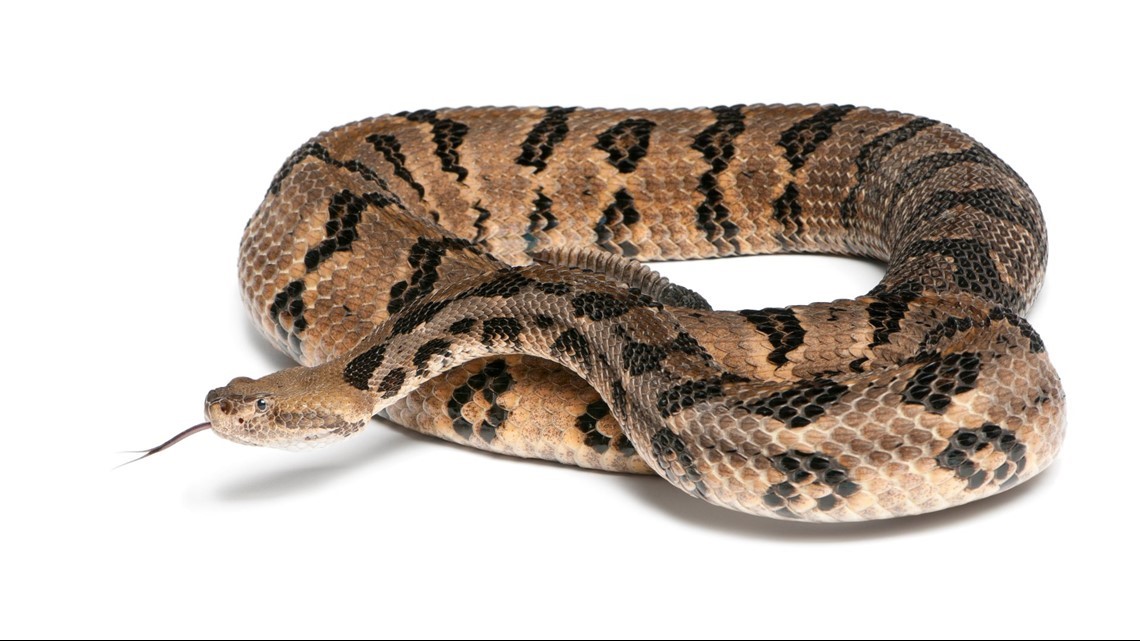
The Timber Rattlesnake is the only rattlesnake that can be found in East Tennessee.
It tends to live in remote wooded areas around the mountains and stream corridors, and the TWRA said it's common to find them coiled up near fallen logs or sunning itself on rocks.
It's color is highly variable, but the TWRA said it's often a shade of gray with a black tail. It has distinct black chevron-shaped crossbands down its body and of course carries the characteristic rattle.
Of Tennessee's four venomous snakes, it's the largest and most dangerous. It's considered to have one of the most potent bites of any venomous snake in North America due to its long fangs and high venom yield.
However, it's also very shy when it comes to humans and tends to avoid contact whenever possible, plus it gives plenty of warning with its rattle before it attempts to strike.
The Cottonmouth


The cottonmouth is found across Western Tennessee and a few isolated spots in Central Tennessee.
Often confused with a number of watersnakes, the cottonmouth has a thick body with generally a bland gray/brownish color and dark crossbands that may not be visible. A white upper lip might be noticeable as well.
The snakes are commonly found in aquatic habitats, but their aggressive nature is exaggerated according to the TWRA. They tend to flee when encountered, though they escape in random directions which means they sometimes escape toward you rather than away.
Their venom is potent, but they rarely bite unless they are directly threatened. So long as you don't attempt to capture or harass them, cottonmouths pose little threat to humans.
The Pygmy Rattlesnake

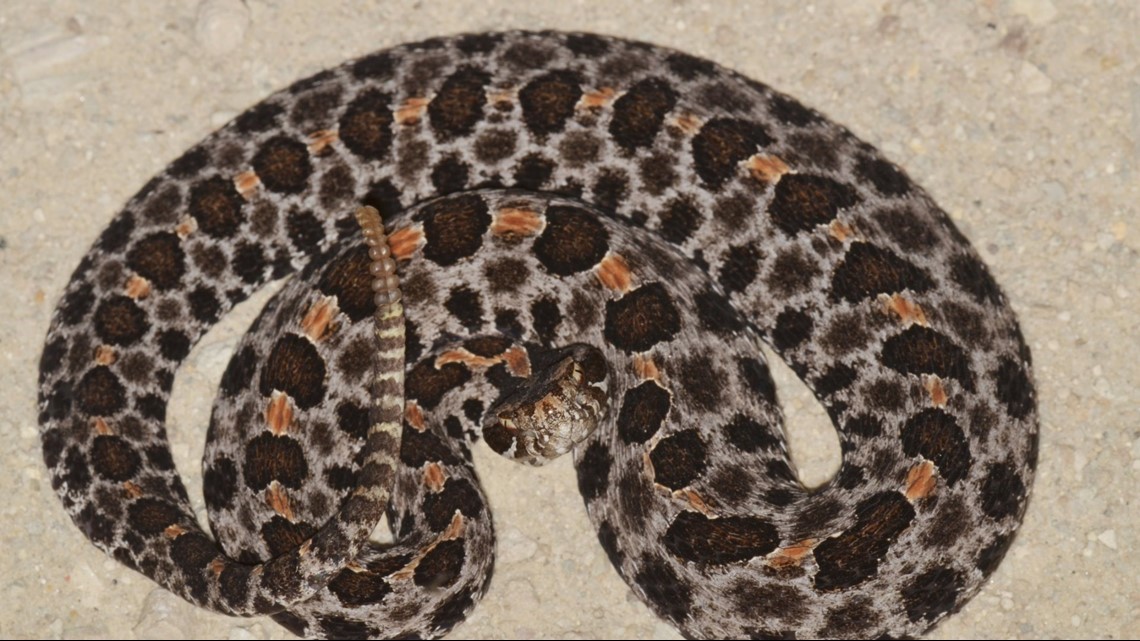
The Pygmy Rattlesnake is a small, colorful snake that can only be found in a section of Western Tennessee in the Highland Rim that runs along the Tennessee River.
They are gray or tan with an orangish-brown striping running down the back, and dark bar-shaped blotches running along the length of their back.
They are usually found close to water, feeding on frogs, lizards and other small snakes.
They are considered very rare and listed as a threatened species by the TWRA. Their rattle has a distinct buzz that sounds closer to that of an insect than a rattlesnake.
It's venom is typically not enough to kill a person, but still serious and should be treated immediately. They are known to become aggressive if they feel threatened, but like the timber rattlesnake are shy and will avoid being disturbed.


